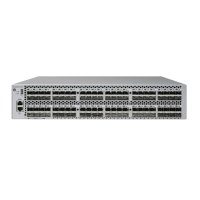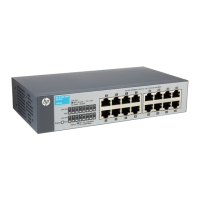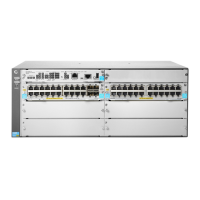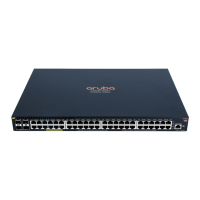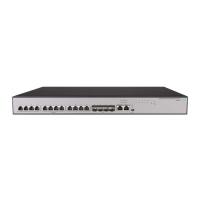147
Step Command Remarks
8. Enter Layer 2 Ethernet
interface view or Layer 2
aggregate interface view.
interface
interface-type
interface-number
N/A
9. Configure the uplink port as a
promiscuous or trunk
promiscuous port of the
specified VLANs.
• Configure the uplink port as a
promiscuous port of the
specified VLAN:
port private-vlan vlan-id
promiscuous
• Configure the uplink port as a
trunk promiscuous port of the
specified VLANs:
port private-vlan vlan-id-list
trunk promiscuous
By default, a port is not a
promiscuous or trunk
promiscuous port of any VLAN.
10. Return to system view.
quit
N/A
11. Enter Layer 2 Ethernet
interface view or Layer 2
aggregate interface view.
interface
interface-type
interface-number
N/A
12. Assign the downlink port to
secondary VLANs.
a. Set the link type of the
port:
port link-type { access |
hybrid | trunk }
b. Assign the access port to
the specified VLAN:
port access vlan vlan-id
c. Assign the trunk port to
the specified VLANs:
port trunk permit vlan
{ vlan-id-list | all }
d. Assign the hybrid port to
the specified VLANs:
port hybrid vlan
vlan-id-list { tagged |
untagged }
Select substep b, c, or d
depending on the port link type.
13. Return to system view.
quit
N/A
14. Enter Layer 2 Ethernet
interface view or Layer 2
aggregate interface view.
interface
interface-type
interface-number
N/A
15. Configure the downlink port
as a host or trunk secondary
port.
• Configure the downlink port
as a host port:
port private-vlan host
• Configure the downlink port
as a trunk secondary port:
port private-vlan vlan-id-list
trunk secondary
By default, a port is not a host or
trunk secondary port.
16. Enter primary VLAN view.
vlan
vlan-id
N/A
17. Associate the primary VLAN
with the specified secondary
VLANs.
private-vlan secondary
vlan-id-list
By default, a primary VLAN is not
associated with any secondary
VLAN.
18. Return to system view.
quit
N/A

